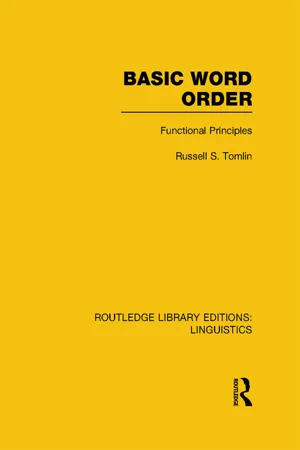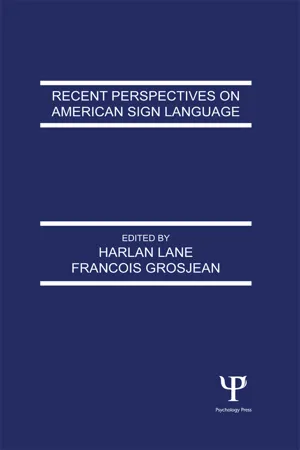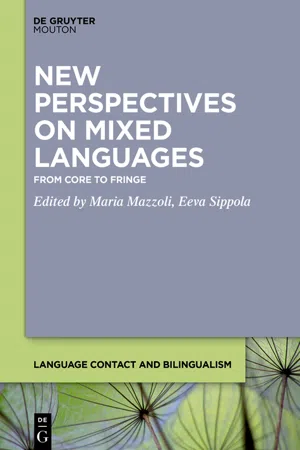Languages & Linguistics
Subject Verb Object
Subject-Verb-Object (SVO) is a basic word order in sentence structure where the subject performs the action on the object. This order is common in languages such as English, Mandarin, and French. In SVO languages, the subject typically comes before the verb, and the verb comes before the object in a sentence.
Written by Perlego with AI-assistance
Related key terms
5 Key excerpts on "Subject Verb Object"
- eBook - ePub
Basic Word Order (RLE Linguistics B: Grammar)
Functional Principles
- Russell S Tomlin(Author)
- 2014(Publication Date)
- Routledge(Publisher)
2 ):(2) Additional requirements on the explanation (a) Why do subject-initial languages outnumber verb-initial languages? (b) Why do object-initial languages occur so much less frequently than do subject-initial or verb-initial languages? (c) Why do VSO languages outnumber VOS? (d) Why do VOS and OVS languages outnumber OSV? (e) Why do SOV languages outnumber VSO? (f) Why do SVO languages outnumber VSO? (g) Why are VOS and OVS languages of approximately equal frequency? (h) Why are SOV and SVO languages of approximately equal frequency?Though the minimum and additional requirements overlap to a certain extent, the basic difference between the two is that the minimum requirements are concerned with the basic identification of those orders which are more common and those which are less common, while the additional requirements are concerned with the more detailed question of their relative frequencies.It will be seen immediately below that the explanation offered in this volume meets fully the minimum requirements described above. Further, it meets fully the additional requirements described above.The ExplanationTwo perspectives will be taken on the explanation of the basic constituent order typology. The first perspective considers the frequency distribution of constituent orders with respect to verb position. The second perspective considers the distribution independent of verb position. For each perspective, the explanation offered is essentially the same. There is a language-general constraint that the ideal basic constituent order for a given verb position is one in which the three principles, TFP, and AFP, and VOB, are maximally realized. - David Hornsby(Author)
- 2014(Publication Date)
- Teach Yourself(Publisher)
do-support.Spotlight: Flexible word order: LatinConstituent order plays a more important role in determining argument structure in English than in many other languages. In Latin, for example, a rich system of case marking on nouns allowed for much freer order of subject and object NPs and VPs. The default or unmarked word order was subject–object–verb (SOV), but other orders, conveying the same information but with slightly different emphasis, were also possible.In the examples below, the subject lupus (‘wolf’) is marked as nominative (subject), and the object gallinam (‘hen’) is marked as accusative (direct object), which allows the simple sentence ‘The wolf sees the hen’ to be expressed in six different orders:1 Lupus gallinam videt. (SOV)2 Gallinam lupus videt. (OSV)3 Videt lupus gallinam. (VSO)4 Videt gallinam lupus. (VOS)5 Gallinam videt lupus. (OVS)6 Lupus videt gallinam. (SVO)Government and agreementAs we have seen, sentences are both ordered and hierarchically structured. In many languages, the relationships between elements within a phrase or sentence are formally marked. In English, for example, the form of the demonstrative adjectives this and that must agree with its noun for number:• This dog• These dogs• That house• Those housesThis marking of relationships is known as agreement or concord, and often affects items at some distance from each other in a sentence. In the following example, the third person singular form requests is required to mark agreement with the head of the complex subject noun phrase (boy):• The boy with the long unwashed hair whom you met at a party last Friday requests the pleasure of your daughter’s company.Formal agreement marking in modern English is relatively limited: verbs, with the exception of to be- eBook - ePub
- Harlan L. Lane, Francois Grosjean(Authors)
- 2017(Publication Date)
- Psychology Press(Publisher)
Fischer’s paper basically argues that ASL has become a Subject-Verb-Object (SVO) language like English, possibly through increasing influence from English itself. Fischer constructed sign sequences and presented them to native signers for interpretation. The presented sentences consisted of various permutations of two nouns and a verb: NVN, NNV, VNN. (When either of the two nouns can be interpreted as subject or object, the sentence is referred to as “reversible,” e.g. “John kicked Bill,” but if only one noun can logically or reasonably be considered the subject or object, the sentence is “nonreversible,” e.g. “John kicked the chair.”) Fischer reports that the interpretations provided by her informants were as follows:1. NVN was interpreted as SVO. 2. NNV was interpreted as either a) conjoined subject-verb (N and N V), or b) OSV 3. VNN was interpreted as either a) verb-conjoined object (V N and N), or b) VOS Fischer’s (1975) conclusions from these interpretations was that ASL is an underlying SVO language. This does not mean that SVO is the only allowable surface word order: “Other orders are allowed under the circumstances that (a) something is topicalized, (b) the subject and object are non-reversible, and/or (c) the signer used space to indicate grammatical mechanisms [p. 21],” Variations from the basic SVO order can be signaled by “intonation breaks,” which Fischer characterizes as consisting of pauses, head tilts, raised eyebrows, and/or possibly other nonmanual cues. Thus NVN is interpreted as SVO, contains no breaks, and is considered the underlying order. N,NV may be interpreted as O,SV with the object topicalized and a break between it and the remainder of the sentence (an example of a topicalized object in English would be “As for the rhubarb, John ate [it]”). The sequence VN,N may be interpreted as VO,S with a topicalized verb phrase, followed by the subject with a break after the verb phrase (symbolized by the comma). (An example of a topicalized verb phrase in English would be “As for doing the dishes, John will.”) In discussing Fischer’s data, Liddell (1977) notes that although these three orders include the subject in all three sentence positions, initial, medial, and final, this does not indicate random word order in ASL. Instead, he adds the observation that “if the subject or object accompanies the verb, the subject precedes the verb and the object follows the verb [p. 109].” - eBook - ePub
New Perspectives on Mixed Languages
From Core to Fringe
- Maria Mazzoli, Eeva Sippola, Maria Mazzoli, Eeva Sippola(Authors)
- 2021(Publication Date)
- De Gruyter Mouton(Publisher)
VO vs. OV: What conditions word order variation in Media Lengua?
Isabel DeibelThe Pennsylvania State UniversityAcknowledgements: This research was supported by a LeClaire (Lee) B. Watts Endowed Scholarship in Romance Languages, a Penn State Center for Global Studies Fellowship, and a Penn State External Funding Incentive Award. I am particularly grateful for the help of Gabriel Cachimuel, José María Casco and Antonio Maldonado during data collection, and I thank John M. Lipski and Rena Torres Cacoullos for their guidance and support with this project, and Jesse Stewart for providing helpful comments on an earlier version of this manuscript.1 Introduction
Every thought that a speaker wishes to communicate needs to be linguistically encoded in a specific linear order. While there are various possible orders of subject (S), verb (V) and object (O) in transitive declarative clauses, the majority of the world’s languages follow two predominant word orders: (S)OV (565/1377, e.g. Quechua,1 Basque, Japanese) and (S)VO (488/1377, e.g. English, Spanish), with some (189/1377, e.g. German, Dutch) allowing more than one predominant order (Comrie 1989 ; Dryer 2013 ; see also Goldin-Meadow et al. 2008 ; Langus and Nespor 2010 ; Schouwstra and de Swart 2014 ). If more than one order is possible in a language, variation in constituent order may be conditioned by pragmatic-stylistic factors (e.g. emphasis) or related to language contact.This paper examines word order variation in Media Lengua, a mixed language spoken in Highland Ecuador. In the Imbabura province (Northern Ecuador), Media Lengua has been documented in three communities: Angla, Casco Valenzuela and Pijal. These three villages are close to San Pablo del Lago, lying within a radius of 5 mi/8 km. Many participants in the current data set as well as in data collected by other authors indicate that close family and commercial ties between these three communities may have led to the spread of Media Lengua from Pijal to Angla and Casco Valenzuela (Stewart 2011 ; Lipski 2016 ; Deibel 2019 ). In addition, previous research has noted that speakers in Pijal appear to have shifted more to Spanish (Gómez Rendón 2008b ; Müller 2011 ; Lipski 2016 - eBook - ePub
- Elizabeth Pearce(Author)
- 2015(Publication Date)
- De Gruyter Mouton(Publisher)
Chapter 7Sentence structure
7.1 . Introduction
Unua has basic SVO constituent ordering and the aim of this chapter is to show how these S,V and O constituents cooccur with various other kinds of components in declarative sentences. More complex constructions with preposed topic or focus constituents are discussed in chapter 12 and subordinate clauses are treated in chapter 8 . Negative and interrogative sentences are described in chapters 10 and 11 respectively.In chapter 5 we have already looked at uses of the particle xini/xni/ni ‘OBL’ occurring after verbs with an oblique or an indirect object (section 5.3.4 ) and we also saw in sections 5.5 and 5.6 that there are various particles and predicate words with aspectual functions which can occur after a verb. The material studied in these earlier sections suggests the following frame for the sequencing of components in transitive sentences and in sentences with an oblique/indirect object (‘SU’ = subject, ‘DO’ = direct object, ‘OBL’ = indirect object/oblique):170(1)The label ‘Verb’ in (1) is here a cover term which includes compounded roots and other types of verb-verb sequences discussed in sections 5.4.4 and 5.6 . As described in section 5.2 , the subject of the clause is referenced through the obligatory encoding of its person and number characteristics in the prefix on the verb. The subject does not have to be overt but, when it is overt, it precedes the verb. Whereas indirect/oblique arguments and locative expressions are preceded respectively by the oblique particle xini/xni/ni and by locational particles/prepositions, the direct object occurs without such a preceding particle/preposition. Most transitive verbs bear the -i ‘TR’ suffix (section 5.3 ) whether or not the direct object is overt. With a limited number of verbs, a singular pronominal direct object may be manifested as a suffix on the verb, rather than occurring as an independent pronoun after the verb (section 5.3.2
Index pages curate the most relevant extracts from our library of academic textbooks. They’ve been created using an in-house natural language model (NLM), each adding context and meaning to key research topics.




